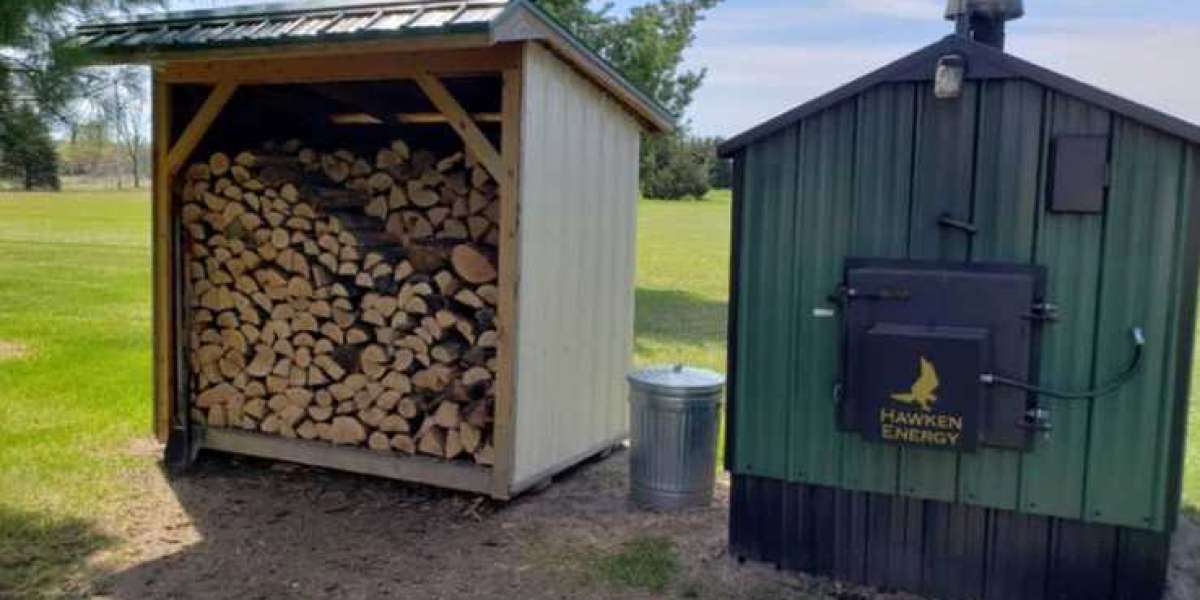When it comes to heating your home with a chimney wood stove, the chimney plays a crucial role in ensuring safety, efficiency, and optimal performance. A well-designed chimney helps facilitate the proper venting of smoke and gases, keeping your home warm and safe during the colder months. But with so many options available, how do you choose the best chimney design for your wood stove?
In this post, we’ll explore different chimney designs and help you understand which might be the best fit for your wood stove.
1. Single-Wall Chimneys
Single-wall chimneys are the most basic and affordable option for venting a wood stove. These chimneys are typically made of galvanized steel and feature a simple, single-wall construction. Single-wall chimneys are easy to install, making them a popular choice for homeowners on a budget.
However, while single-wall chimneys are cost-effective, they have a few downsides. Since the walls are thinner, they tend to lose more heat, which can lead to creosote buildup inside the chimney. This buildup can create a fire hazard if not regularly cleaned. Single-wall chimneys also tend to be less durable than double-wall alternatives, which can affect their longevity.
Best for: Budget-conscious homeowners who are willing to perform regular maintenance.
2. Double-Wall Chimneys
Double-wall chimneys are a more efficient and durable option for venting your wood stove. These chimneys consist of two layers of metal, with an insulating air gap between them. The double-wall construction helps retain heat inside the chimney, reducing heat loss and minimizing the chance of creosote buildup. This type of chimney is also more resistant to corrosion and can withstand higher temperatures compared to single-wall chimneys.
While double-wall chimneys are more expensive upfront, they tend to last longer and require less maintenance over time. They are also a great option for homes in colder climates, as the insulating layer helps maintain the draft in the chimney, ensuring your wood stove operates efficiently.
Best for: Homeowners looking for a long-lasting, efficient chimney that requires less maintenance.
3. Prefab Chimneys
Prefab chimneys are pre-assembled, factory-made chimney systems that are designed for easy installation. These chimneys come in a variety of materials, including stainless steel and aluminum, and are often used for new wood stove installations or when retrofitting a home with a wood stove.
Prefab chimneys are popular because they are highly customizable, allowing you to choose the right material, height, and configuration for your specific needs. They also offer excellent insulation, which helps to improve the efficiency of your wood stove. Prefab chimneys are generally more expensive than single-wall options, but they provide a high level of performance and safety.
Best for: Homeowners who want a high-performance chimney that is customizable and easy to install.
4. Masonry Chimneys
Masonry chimneys are a traditional and highly durable option for venting a wood stove. These chimneys are typically made from brick or stone and are custom-built to fit your home’s needs. Although masonry chimneys are more expensive and take longer to install than prefab systems, they offer excellent heat retention and can last for decades with proper maintenance.
Masonry chimneys are ideal for homeowners who want a permanent, aesthetically pleasing solution to their wood stove venting. They provide a rustic, classic look while offering superior heat retention and draft performance.
Best for: Homeowners seeking a long-term, aesthetically pleasing chimney system.
5. Insulated Chimneys
For the best overall performance, an insulated chimney system is often the top choice. Insulated chimneys feature a layer of insulation around the chimney pipe to maintain consistent temperatures, reducing the chance of creosote buildup and ensuring proper draft. These chimneys are especially useful in colder climates, where keeping the chimney warm is essential for maintaining a consistent airflow.
Insulated chimneys come in both single-wall and double-wall options, providing homeowners with flexibility depending on their needs. The added insulation helps your wood stove run more efficiently, reducing the amount of fuel you need to burn to maintain the desired temperature in your home.
Best for: Homeowners in cold climates who want to optimize their wood stove’s efficiency.
Conclusion
Choosing the best chimney for your wood stove depends on factors like budget, climate, and maintenance preferences. While single-wall chimneys are affordable and easy to install, double-wall and insulated options offer enhanced efficiency and safety. For a high-performance solution, prefab and masonry chimneys provide excellent longevity and customization.
No matter which chimney design you choose, regular cleaning and inspection are vital for ensuring the safety and efficiency of your wood stove. Proper chimney maintenance will not only protect your home but also maximize the heating power of your wood stove, keeping your family cozy all winter long.














